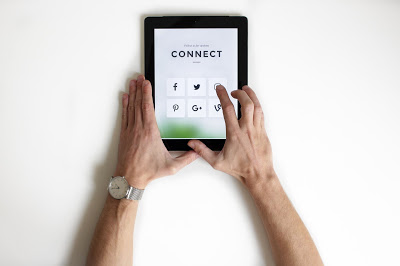I originally wrote this for a small audience, but thought I’d share with you all. While I largely use Twitter as a “baseline” here, it applies equally well to Tumblr, Facebook, G+, Plurk, or any other social media network not yet invented.
This is the great principle of social media:
Don’t get into social media to market your stuff.
And this is the great analogy of social media:
It’s like an electronic version of your office water cooler or breakroom.
Let me explain:
At my workplace, people will routinely share a cool picture or video that they saw. Or they’ll talk about something their kid did. Or point at something in the newspaper. Or maybe they’ll recommend the good book they read, or the vacation they were just on. And if they’re doing something else – participating in a charity, making crochet wombats to sell, hawking addictive chocolate mint cookies – they’ll ask you if you’re interested as well.
But if you never, ever talk to anyone in the break room – or worse, ignore them when they talk to you – they won’t be very receptive when you ask them to buy your addictive cookies. And if you ask repeatedly if they’ll buy the cookies every time someone enters the room… well, they may just go on an Atkins diet to spite you.
That analogy explains a lot of the questions and misconceptions people have about Twitter (or any other type of social media). Why would anyone care about your day? The same goes for your breakroom – you share things with the people in your breakroom which you think are interesting.
And that’s why the breakroom (or water cooler) analogy is so useful. Many basic social norms carry over. You don’t have to announce when you’re going to the restroom. You don’t share what you had for breakfast… unless it was cool.
But other social norms are changed by the larger audience you have online. I don’t talk about Doctor Who with anyone I work with – nobody else there watches the show. The role of technology in healthcare doesn’t interest my writing group, but if Clive Barker was adapting a Charles Bukowski poem into a screenplay they’d be riveted.
On twitter (or other social media) there are likely to be people interested in each of those who follow my updates… so they filter out what they do and don’t want to see. As a result, I share things I think are interesting. People who find those things (or me) interesting will follow my twitter (or Facebook, etc) updates. And sometimes when I’m doing or sharing something cool, they might decide to check it out or support it themselves. [1]
And that brings us to the last thing to understand:
Do not try to keep up with all the social media
At least at first, I would recommend that you don’t follow a ton of people – maybe a mix people you personally know, or celebrities and news accounts you’re interested in. But even then it can quickly become overwhelming. Again, our breakroom analogy comes to the rescue. Imagine having to try to keep track of EVERY conversation that happens in a breakroom. Heck, think back to Thanksgiving. How many conversations were going on that you weren’t part of? You cannot be expected to know about what was said there – and you shouldn’t be on social media either.
Likewise, you shouldn’t expect everyone else to have seen your update about… well, anything. Even if it’s a popular “promoted” post on Facebook. Consider Ferrett Steinmetz’s experience of Facebook – which is totally different from a relative’s: https://www.theferrett.com/ferrettworks/2013/11/how-facebook-is-like-the-mirror-of-erised/
Hopefully you’ve got something of an idea of what social media can be like, and the mindset to approach it with. There’s plenty of how-to guides to each specific social network that you can turn up with a quick search – and things change.
But the technology is a means to an end; understanding the why of social media is the important part.
Our social circles used to be limited by how far we could physically travel. It isn’t that way any longer. [2]
[1] Keep in mind that social media is, well, social. You can reply to just about anybody who is on there – and they can reply to you. But you don’t *have* to reply to anyone either. Most people start off by reading other people’s updates, then by sharing their own, and then eventually getting into conversations about those updates.
[2] Well, not always. Mary Queen of Scots had quite the correspondence-based relationship with Queen Elizabeth. Hopefully your social networking experience has fewer ‘splodey spouses.
